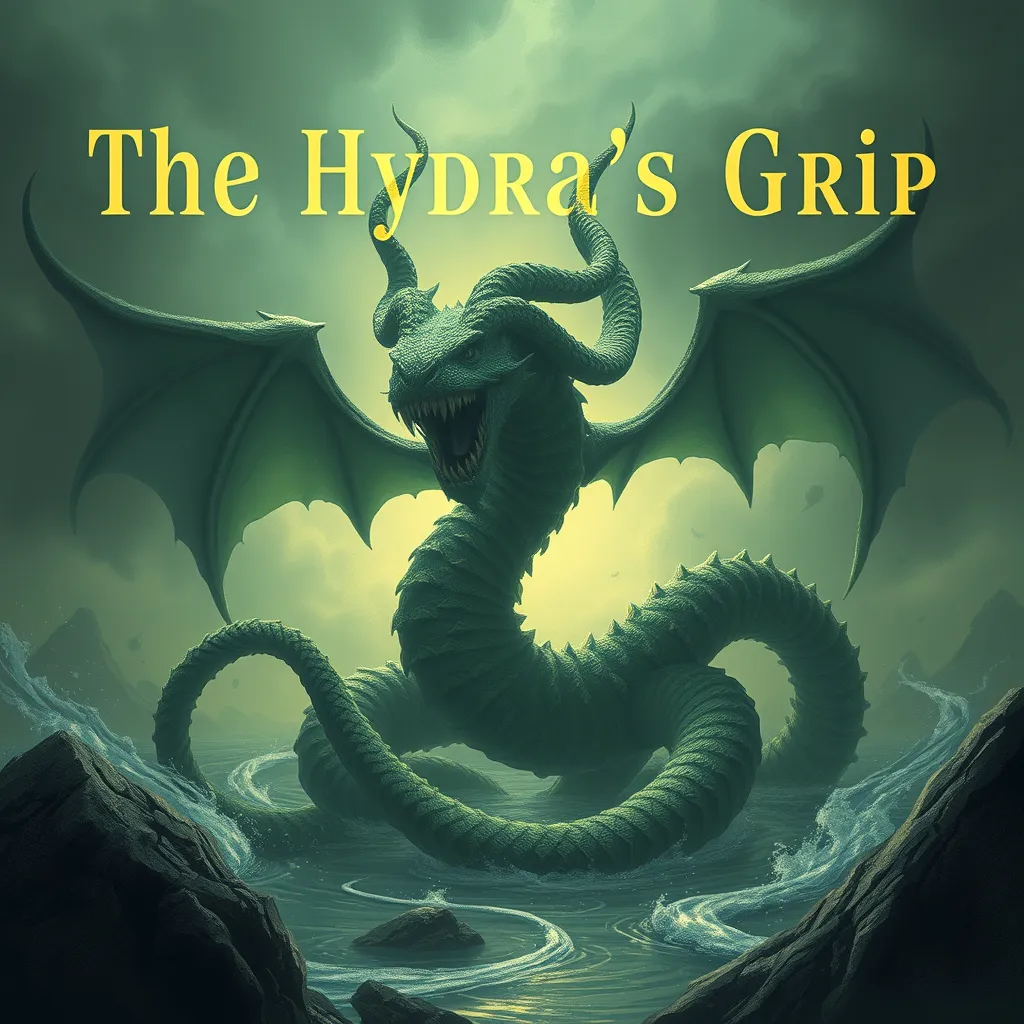The Basilisk in Games: Exploring the Monster’s Role in Video Games and Tabletop RPGs
I. Introduction
The basilisk, often depicted as a serpent or lizard with the ability to petrify those who gaze upon it, has fascinated and terrified people for centuries. Its origins can be traced back to ancient mythology, where it was considered the king of serpents, embodying both danger and power. This article explores the basilisk’s evolution from its mythological roots to its prominent role in modern video games and tabletop RPGs.
In popular culture, the basilisk has appeared in various forms, from literature to films and games. With its unique abilities and menacing appearance, the basilisk serves as a compelling antagonist that challenges players and characters alike. This article aims to delve into the basilisk’s representation in gaming, examining its role, design, and the impact it has on player experiences.
II. The Basilisk in Mythology and Folklore
The basilisk has a rich history in mythology, often described as a creature that can kill with its gaze. Historical accounts reveal that the basilisk was believed to be born from a serpent’s egg, incubated by a rooster. Its terrifying presence is marked by various descriptions, including a scaly body, a crown-like crest, and venomous fangs.
Symbolically, the basilisk represents death, destruction, and the unknown. Different cultures have attributed various meanings to the creature, often associating it with the battle between good and evil. For instance, in medieval times, the basilisk was seen as a representation of sin and temptation, often linked to the devil. Over time, as folklore evolved, the basilisk transitioned into a popular figure in literature and entertainment, paving the way for its current interpretations.
III. The Basilisk in Tabletop RPGs
Tabletop role-playing games (RPGs) have embraced the basilisk as a formidable creature that players often encounter. In games like Dungeons & Dragons (D&D), the basilisk plays a significant role, offering challenges and opportunities for storytelling.
A. The role of the basilisk in Dungeons & Dragons
1. Stat block and abilities
In D&D, the basilisk is typically presented with a comprehensive stat block detailing its abilities, such as:
- Armor Class: 15
- Hit Points: 52
- Speed: 30 ft., swim 30 ft.
- Abilities: Gaze (petrification), bite, and tail attacks
2. Impact on gameplay and storytelling
The basilisk’s petrifying gaze creates high stakes for players. Characters must employ strategy and teamwork to overcome its deadly abilities, often leading to memorable moments and thrilling encounters. The creature’s presence can enhance the narrative, as players may seek to uncover the lore behind the basilisk or find ways to defeat it through clever tactics.
B. Other tabletop RPGs featuring the basilisk
1. Unique interpretations and mechanics
Various tabletop RPGs have their own versions of the basilisk, often with unique mechanics and interpretations. For example:
- Pathfinder: The basilisk has a similar petrification ability but may also possess magical traits.
- Monster of the Week: The basilisk can be a monster tied to urban legends, with narrative elements that influence how players encounter it.
2. Player interactions and encounters
In these games, player interactions with the basilisk can vary widely. Some may choose to fight, while others might seek alternative solutions, such as negotiating or using spells to counteract its powers. This flexibility allows for diverse gameplay experiences.
IV. The Basilisk in Video Games
The basilisk has also made notable appearances in various video games, often serving as a challenging enemy or a pivotal part of the storyline.
A. Notable appearances in popular video games
1. Examples: Dark Souls, The Witcher series, etc.
Some of the most recognized appearances of the basilisk include:
- Dark Souls: The game features a basilisk that can inflict a petrifying curse, presenting a unique challenge for players.
- The Witcher series: In this franchise, basilisks are depicted as formidable foes with a strong connection to the lore of the world.
2. Gameplay mechanics and challenges presented
In these games, the basilisk’s mechanics often include:
- Petrifying attacks that require players to avoid direct line of sight.
- High health and damage output, making encounters intense and strategic.
B. Evolution of the basilisk’s design and role in gaming
1. Visual representation and adaptations
As video games have evolved, so too has the design of the basilisk. From pixelated sprites to detailed 3D models, the creature’s visual representation has become more intricate, showcasing its lethal features and imposing presence. This evolution allows players to appreciate the creature’s menace and contributes to the overall atmosphere of the game.
2. Integration into game lore and world-building
The basilisk’s role within game lore often ties to the broader narrative. It may be presented as a guardian of ancient secrets or a creature embodying the consequences of hubris. This integration enriches the gaming experience, as players become immersed in the world where these mythical creatures exist.
V. Comparing Basilisk Depictions Across Genres
A. Differences in portrayal between tabletop and video games
While both tabletop RPGs and video games feature the basilisk, their portrayals can differ significantly. In tabletop games, the basilisk often plays a more narrative-driven role, allowing for creative player interactions. In contrast, video games typically emphasize combat and mechanics, focusing on the challenge of defeating the creature.
B. Common themes and motifs in both mediums
Despite their differences, several themes are common across both mediums:
- The struggle against a powerful foe.
- The theme of gazes and perception, highlighting the danger of underestimating the basilisk.
- The quest for knowledge or treasure often intertwined with encounters.
C. How player engagement shapes the experience of fighting a basilisk
In both settings, player engagement is crucial. In tabletop RPGs, the collaborative storytelling experience allows players to shape their encounters creatively. In video games, player skill, strategy, and adaptability are tested, making each basilisk encounter unique.
VI. The Basilisk’s Influence on Game Design
A. The creature as a case study for monster design
The basilisk serves as an excellent case study in monster design. Its distinct abilities and lore challenge designers to create engaging gameplay mechanics that are balanced and immersive.
B. Balancing difficulty and player experience
Designers must carefully balance the difficulty of encounters with the basilisk to ensure players feel challenged yet capable. This balance is vital in maintaining player engagement and satisfaction.
C. Incorporating lore and mythological elements into gameplay
Incorporating the basilisk’s rich lore into gameplay can enhance the narrative depth of a game. Designers can weave mythological elements into quests, character backgrounds, and world-building, creating a cohesive and immersive experience for players.
VII. Community and Fan Interpretations
A. The basilisk in fan art and fan fiction
The basilisk has inspired a vibrant community of fans who create art, stories, and other content featuring the creature. This fan-driven creativity reflects the lasting impact of the basilisk on popular culture.
B. Fan-made content and campaigns featuring the basilisk
Many tabletop RPG players have crafted their own campaigns that revolve around the basilisk, showcasing unique interpretations and challenges. These campaigns often draw on the creature’s lore, offering fresh narratives and encounters.
C. Community discussions and theories about the creature
Online communities frequently engage in discussions about the basilisk’s various representations, analyzing its symbolism, mechanics, and role in different games. These discussions foster a deeper appreciation for the creature and its impact on gaming culture.
VIII. Conclusion
The basilisk has established itself as a significant figure in both video



